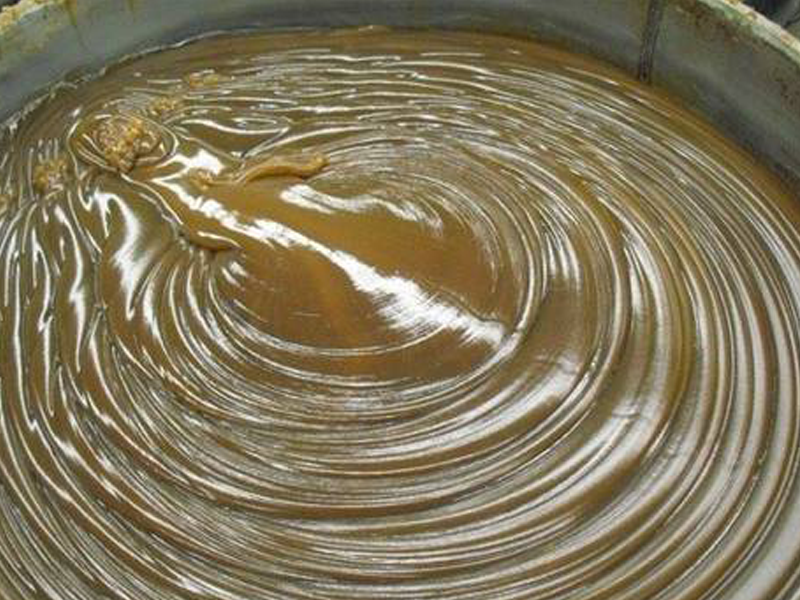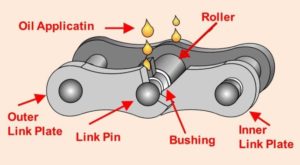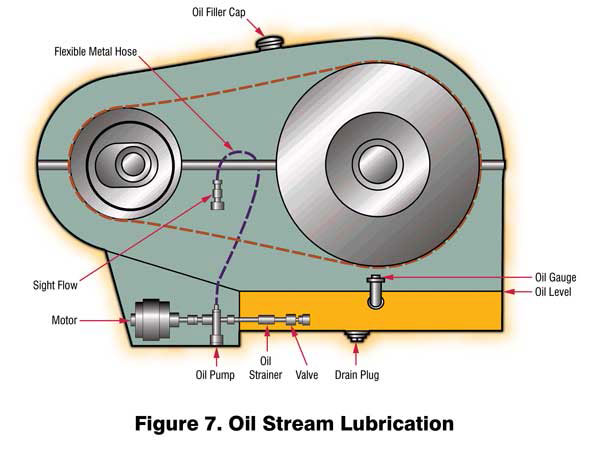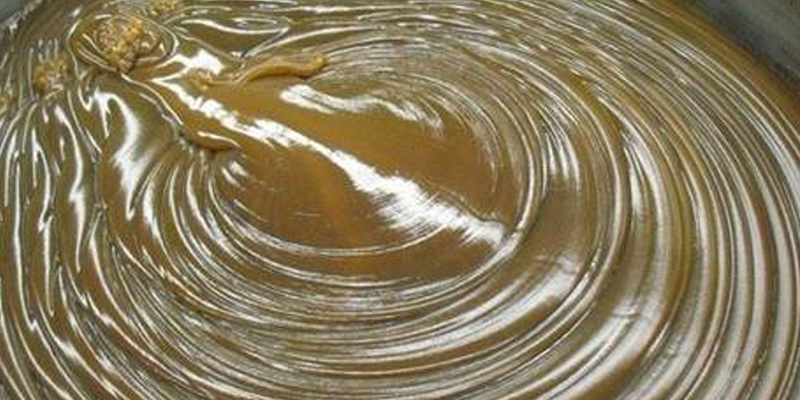
It is almost impossible to imagine life without chains. We are familiar with bicycle chains and forklift trucks that use chains to lift loads. Chains are commonly used in conveyor systems, to transmit power and all of us are acquainted with the irritating sound of chainsaws. Many chains in use today fail prematurely due to inadequate lubrication. Chain lubrication often consists of applying a heavy oil or grease to the chain. While this may lubricate the sprockets and the outside of the chain, it does little to protect the most vulnerable areas, i.e. the contacting surfaces inside the chain. In dusty environments sand may get trapped in such heavy lubricants to produce a fine grinding paste that will shorten the life of the chain dramatically.
The majority of chains fail from the inside. They lengthen or kink up due to wear and corrosion inside the pin and bushing area. To lubricate them properly, the lubricant needs to be applied to penetrate and protect the inside of the chain and leave a solid film of oil behind. Lubrication is essential between the rollers and bushings, but other important areas to lubricate are the contact surfaces between the pins, the bushings and the link plates, which articulate while the chain is in motion.

To provide effective protection chain lubricants should be formulated to have the following characteristics:
- Sufficiently low viscosity to reach all internal moving surfaces
- Enough ‘body’ to maintain the lubricating film under high pressures
- Effective protection against rust and corrosion
- Good resistance to throw-off
- Ability to maintain lubricating qualities under all operating conditions
Chain lubricants are formulated with relatively high viscosity index base oil to penetrate into critical internal surfaces at low temperatures and yet maintain an effective lubricating film at high loads and temperatures. To provide the desired lubricating qualities under all operating conditions, chain lubricants are fortified with antiwear and/or extreme pressure additives, rust and corrosion inhibitors and tackiness agents. Antifoam additives, pour point depressants and solid lubricants may be added to the oil if required by the application. Food grade chain lubricants should be used in food processing plants. Suggested viscosity grades for various ambient temperature ranges are shown in the following table:
| TEMPERATURE, C | ISO VISCOSITY GRADE |
| -30 to + 25 | 32 |
| -20 to +30 | 46 |
| -15 to +40 | 68 |
| -5 to + 50 | 100 |
| 0 to +55 | 150 |
| +5 to +60 | 220 |
Equally important is the method of lubricant application. The recommended methods of lubrication for chain drives are indicated in the power rating tables published in ASME B29 Series Standards and in various
manufacturers’ manuals. The methods normally listed are manual, drip, oil bath, slinger disk, brush and oil stream. Regardless of the application method, the lubricant needs to be aimed into the pin and bushing area as shown in the visual on the previous page. To reach all the moving surfaces, the lubricant should be applied to the edges of the link plates on the inside of the chain shortly before the chain engages a sprocket (as illustrated below). As the chain travels around the sprocket, the lubricant is carried by centrifugal force into the clearances between the pins and bushings. Spillage over the link plates supplies lubricant to the interior and the end surfaces of the rollers.

Chain manufacturers often use grease or petroleum jelly as an initial lubricant, but grease should not be used to lubricate chains in service, because they are too thick to penetrate into the internal bearing surfaces. Grease should only be used when fittings for injecting the grease into the chain joints are provided.
To maximize chain life requires attention to detail. Operating conditions (load, environment, temperature, speed, etc.) must always be considered when selecting a chain lubricant. Tailoring the lubricant to the specific operating environment may be required. At Blue Chip Lubricants we have the people, products and proficiency to keep the chains of industry moving. Simply mail us at info@bcl.co.za and put us to the test.

